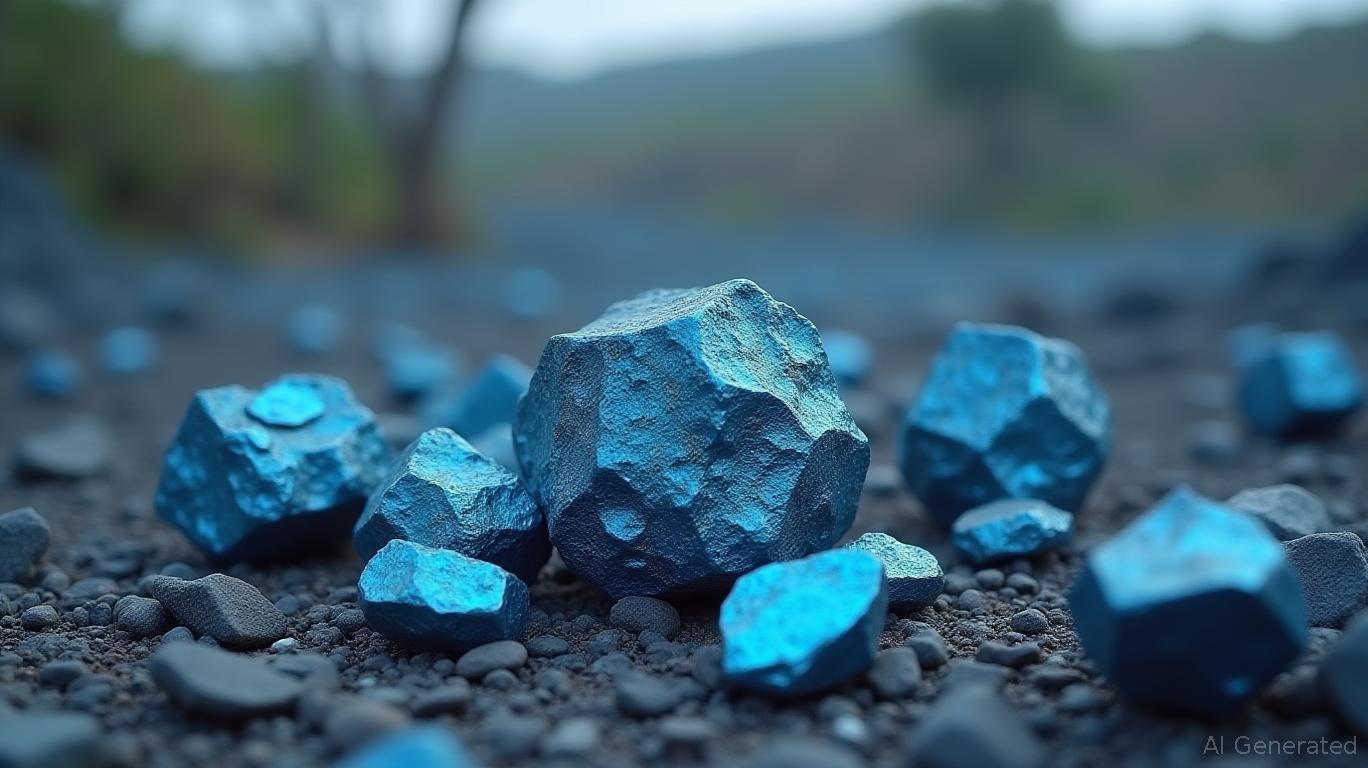The DRC Cobalt Ban Extension: Navigating Volatility and Positioning for Market Shifts
The Democratic Republic of Congo's (DRC) decision to extend its cobalt export ban until September 2025 marks a critical juncture for investors in the critical minerals sector. While the policy aims to stabilize prices amid a global oversupply crisis, it also amplifies risks tied to substitution, geopolitical uncertainty, and enforcement challenges. For investors, this is a pivotal moment to strategically position portfolios to capitalize on emerging opportunities while hedging against downside risks.

Market Dynamics: A Fragile Balancing Act
The DRC's ban, initially imposed in February 2025 to address prices that had plummeted to a nine-year low of $10/lb, has so far yielded limited results. Despite the restriction, cobalt prices remain below $20,000/tonne, underscoring the persistence of structural oversupply. Key drivers include pre-ban stockpiling, reduced demand from the electric vehicle (EV) sector, and the shift toward lower-cobalt battery chemistries.
The extension to September 2025 aims to buy time for market rebalancing. However, stakeholders remain divided. Glencore, the second-largest cobalt producer, supports the policy as a means to stabilize prices, while Chinese majors like CMOC oppose it, fearing lost market share. The DRC's regulatory authority, ARECOMS, is considering a quota system to manage exports—a move that could provide predictability but risks favoring politically aligned operators.
Investment Opportunities: A Multi-Pronged Strategy
To navigate this volatility, investors should adopt a diversified approach, balancing exposure to cobalt equities, nickel alternatives, and recycling plays while staying alert to geopolitical and regulatory shifts.
1. Cobalt Equities: Proceed with Caution
Companies like Glencore (LON: GLEN) and Eurasian Resources Group (LSE: ERG) are direct beneficiaries of price stabilization efforts. Their vertically integrated operations and long-term offtake agreements with battery manufacturers give them an edge. However, investors must monitor enforcement risks: smuggling estimates suggest 5–10% of production evades restrictions, which could undermine supply discipline.
2. Nickel Alternatives: Betting on the Shift to NCM Batteries
As cobalt's role diminishes, nickel-intensive NCM (Nickel-Cobalt-Manganese) batteries are gaining traction. Investors should consider exposure to nickel producers like Tala Labs (TSXV: TALA) and battery firms such as Northvolt (private, but trackable via EV partnerships). A surge in nickel demand could also benefit downstream players like Tesla (NASDAQ: TSLA), which is expanding its use of nickel-heavy batteries.
3. Recycling Stocks: The Long-Term Hedge
Recycling is emerging as a critical supply chain buffer. Companies like Red Metal Recycling (LSE: RMR) and Li-Cycle (NYSE: LICY) are scaling up operations to recover cobalt and other metals from spent batteries. These firms benefit from regulatory tailwinds (e.g., EU battery directives) and the inevitability of circular economies.
Risks to Monitor
- Geopolitical Volatility: The DRC's policy could shift abruptly if ARECOMS prioritizes revenue over price stability. A September decision to lift the ban or relax quotas could trigger a price collapse.
- Substitution Acceleration: The rise of lithium iron phosphate (LFP) batteries—which require no cobalt—now accounts for 63% of China's EV market. This trend could erode cobalt's long-term demand.
- Enforcement Gaps: Weak border controls and artisanal mining's informal sector may dilute the ban's effectiveness.
Action Plan: Act Before the September Crossroads
Investors should:
1. Allocate 30% to cobalt equities (e.g., Glencore), but pair with stop-loss orders to mitigate price swings.
2. Deploy 40% to nickel and battery plays, capitalizing on the NCM transition.
3. Reserve 30% for recycling stocks, which offer a defensible moat against supply chain disruptions.
Conclusion: Timing is Critical
The DRC's extended ban creates a narrow window to position for stabilization while hedging against substitution and regulatory risks. By September 2025, the market will likely bifurcate: if quotas are imposed, cobalt prices could stabilize, rewarding early investors. If the ban is lifted, the oversupply crisis resumes, and alternatives like nickel and recycling will dominate. Investors must act swiftly—waiting until the last minute risks missing the optimal entry point or overexposure to a collapsing market.
In a sector as volatile as cobalt, strategic patience and diversified exposure are the keys to navigating this critical juncture.

Comments
No comments yet